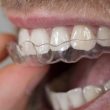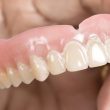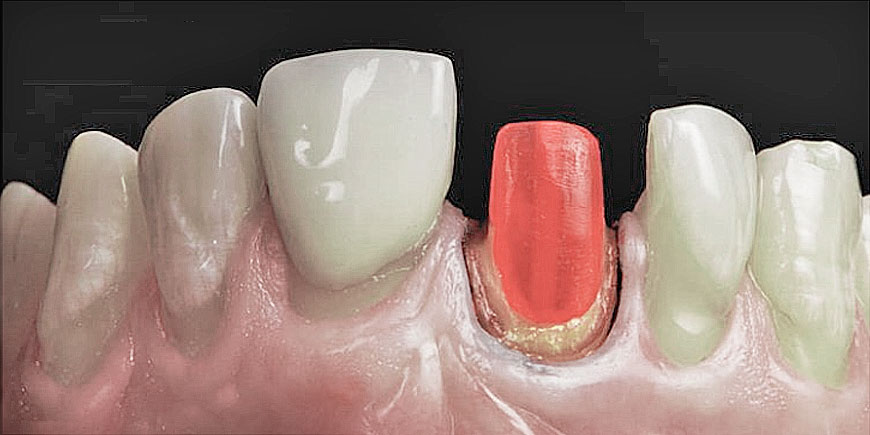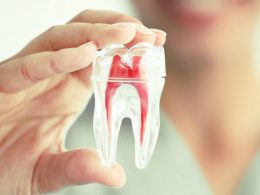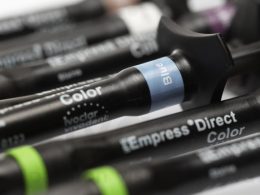Table of Contents
When the tooth crown is structurally compromised by caries, fractures or defective restorations, root canal treatment may be necessary to maintain tooth integrity and to provide stability for coronal rehabilitation.
Endodontic treatment is mainly purposed to remove the infected tissues and microorganisms from the root canal system to control the periapical inflammatory responses and infections. Endodontic treatment is a predictable therapy with a success rate up to 97%. However, there are some cases where it fails, mainly due to uncontrollable anatomical and biological factors.
Endodontic treated teeth, apart from losing their pulp vitality, are greatly undermined, weakened and susceptible to collapse and fracture. This as a consequence of the loss of dental structure, loss of dental elasticity, decrease in their sensitivity to pressure and a high degree of dehydration. Therefore, its longevity will depend mainly on a correct restoration.
For restoring endodontic treated teeth the first question frequently observed is: what material is more appropriated? and the followed question is: which technique, direct or indirect restoration, is better for restoring endodontic treated teeth? Nowadays, the evidences support that the principal aspect is to use adhesive technique for creating a unique and integrated body, involving all the materials and interfaces.
The Post-Endodontic Process
The Endodontic treatment finished after a perfect tooth restoration. During the Endodontic therapy, the tooth should receive a temporary restauration with glass ionomer cement or composite resin. The time between the root canal filling and restorative coronal reconstruction should be the shorter possible to avoid the root canal recontamination.
Once the Endodontics has been carried out satisfactorily, it is the turn of the reconstruction of the dental piece. A reconstruction will depend a lot on the damage that piece has suffered as a result of caries or trauma. This makes it possible to distinguish three cases: minor reconstructions, moderate reconstructions and larger reconstructions.
Minor Reconstructions
In this case, we find a filling to be made rather small. An operation that will be carried out with a material called composite. This material is none other than a special resin that has a color very similar of the tooth.
In these interventions, the properties of the composite are more than sufficient. In fact, this will be correctly fixed to the tooth after the polymerizing light has been applied and the whole process can be carried out in just one session, which makes it very comfortable for the patient.
However, this type of restoration is only possible in the vast minority of cases, when the tooth or molar is almost intact, with only a small perforation in its central portion to access the canals.
Moderate Reconstructions
Some teeth are damaged to the point that they cannot be treated with a mere filling. However, the damage might not be extensive enough to justify the use of a crown. In such cases, an inlay or onlay will prove optimal for tooth restoration.
Inlays and onlays are indirect fillings. This means both are fabricated far away from the patient, typically in a dental lab. The inlay or onlay is then bonded directly to the tooth in a subsequent visit.
There are three main types of inlay/onlay material: porcelain (of which there are different subtypes), gold and composite. Most inlays are now made of porcelain, as the desire for a more natural looking tooth increases and the ability to bond these restorations to your tooth improves. Gold is a truly fantastic material and has been used successfully for many years. Composite inlays are a way to overcome the problem of the traditional composite filling material shrinking in very large cavities.
Larger Reconstructions
Nevertheless, there are cases in which the reconstruction has to be much more profound. Some scenarios in which the composite and inlays/onlays are not, at all, the best alternatives that the Specialist has. This is because these materials will do nothing but weaken the tooth which can favor, with time, the breakage of it.
In these cases, the Specialists resort to another type of materials such as metals, special resins or ceramics. In all cases, these materials are embedded in the tooth to avoid all the problems that the composite can cause.
Severally structurally compromised Endodontic treated teeth often require a post to retain a coronal restoration.
Types of Post and Core Systems
Many teeth require restoration with posts, including prefabricated metal posts, cast posts, or fiber posts. Although fiber posts are currently the best option, the most popular of the posts has been the prefabricated metal post. It is easier to use, cheaper, and provides more variability-clinicians can acquire many different sizes.
The various options offer greater flexibility, depending on the manner in which each case presents itself. In endodontic restoration, the purpose of a post is to retain the core and help strengthen the connection between the coronal buildup material and the remaining tooth structure.
In our practice, and depending on the case, we only use 2 types of them: cast posts and prefabricated nonmetallic posts. We do not like prefabricated metal posts because they are generally coiled inside the root and some times cause its fracture.
Metal Custom Cast Posts
The traditional cast post-and-cores provides a better geometric adaptation to canals, and almost always requires minimum tooth structure removal. Patterns for custom cast posts can be formed either directly in the mouth or indirectly in the laboratory. Regardless, this method requires 2 appointment visits and a laboratory fee.
Prefabricated Nonmetallic Posts
The nonmetallic prefabricated posts have been developed as alternatives, including ceramic (white zirconium oxide) and fiber-reinforced resin posts. Zirconium oxide posts have a high flexural strength, are biocompatible, and are corrosion resistant. However, this material is difficult to cut intraorally with a diamond, and to remove from the canal for retreatment.
The fiber-reinforced composite resin post-and-core system offers several advantages: a one appointment technique, no laboratory fees, no corrosion, negligible root fracture, increased retention resulting from surface irregularities, conserved tooth structure, and no negative effect on aesthetics.
Dental Crowns
Once the post and core have been made or cemented, the tooth is grinding and reshaping to refine details, and the impression is taken for the final crown.
Dental crowns are fixed prosthetic restorations made to restore a damaged tooth to its original shape and size. They are permanently cemented on teeth that have cracked, extensively decayed, or otherwise been damaged.
Permanent crowns can be made from all metal, porcelain-fused-to-metal, all resin, or all ceramic.
- Metals The alloys used in crowns include gold, palladium, nickel or chromium. Metal crowns rarely chip or break, last the longest in terms of wear down, and only require a small amount of tooth to be removed. They can also withstand biting and chewing forces. The metallic color is the main drawback. Metal crowns are a good choice for out-of-sight molars.
- Porcelain-Fused-to-Metal This type of crowns can be matched to the color of the teeth beside them. They have a more natural tooth color. However, sometimes the metal under the crown’s porcelain cap shows through as a dark line. Other drawbacks are that the crown’s porcelain portion can chip or break off and there is more wearing down of the teeth opposite them in the mouth (the top and bottom tooth that come into contact when the mouth is closed). These crowns can be a good choice for front or back teeth.
- All-Resin Are less expensive than other crown types. However, they wear down over time and are more likely to break than porcelain-fused-to-metal crowns.
- All-Ceramic or All-Porcelain This crowns provide the best natural color match than any other crown type. They are also a good choice for people with metal allergies. However, they are not as strong as porcelain-fused-to-metal crowns. They also may wear down the teeth opposite them in the mouth a little more than metal or resin crowns. All-ceramic crowns are a good choice for front teeth.
- Zirconia Crowns Have a hard inner core of zirconia. They replace the metal liner that is used in the all-ceramic crown-making process. This ceramic crowns are capped with vitreous porcelain, which provides the best natural color match. They are also more long-lasting than an all-porcelain crown.
“In the Vast Majority of Cases, Endodontic Treated Teeth Will Have to Be Reinforced and Reconstruct with Artificial Posts and Ceramic Crowns”.
DENTAL TIP
The Story that Repeats Itself One and Thousand Times…
The patient undergoes his root canal treatment, the pain is relieved, a very nice resin is placed on him and he goes home happy and content.
After a short time (a few months, 1, 2 or 3 years later), the tooth or molar begins to hurt or bother, a piece breaks off or it fractures completely. What happened? Very simply… the tooth was NOT properly restored.
It is important to understand that root canals eliminate infections, but they also greatly weaken the teeth. Although it is difficult to understand, and above all to assume, root canals should generally be associated with extensive dental restorations, which are capable of reinforcing the treated teeth and preventing their subsequent collapse and fracture.
All Dentists know this, however, many refrain from suggesting the indicated restoration, mainly due to the fact that most people feel upset to know that they must invest much more money, than they paid for the root canal treatment, in reinforcing and protecting the tooth with inlays, posts and cores, and dental crowns.
It is our duty to warn that more than 90% of endodontic teeth must be restored with metal and/or porcelain structures made in the laboratory. Otherwise, the root canal treatment will only represent a temporary solution, and most likely, the prelude to the fracture and extraction of the tooth. So clear and simple!
How to Save Thousands by Getting Dental Work in Venezuela
On average, dental work in Venezuela is about a third the price of what you are used to paying at home, without a drop in the quality of care. All the process takes is just a little research and a few more logistics. In the “Dental Tourism” category of this same blog we describe all the considerations necessary to get dental care done in Venezuela.
The first thing you want to do is get a quote for the dental work you need done by our team. Most of the time, simply sending a few photos and X-rays to us will do just fine. The online consultation will provide a strong idea of what will need to be done, and will be able to provide you with a pretty close cost estimate for the dental procedures.
Through our WhatsApp or Email you can ask all the necessary questions about the proposed treatment and its details. DENTAL VIP has specially trained personnel for this function.
Once the quote is approved, you must indicate the date of your trip to corroborate the treatment viability in the selected period, ensure your accommodation and proceed with the purchase of air tickets.
Congrats! Now you are on your way to saving thousands by getting dental work in Venezuela.


